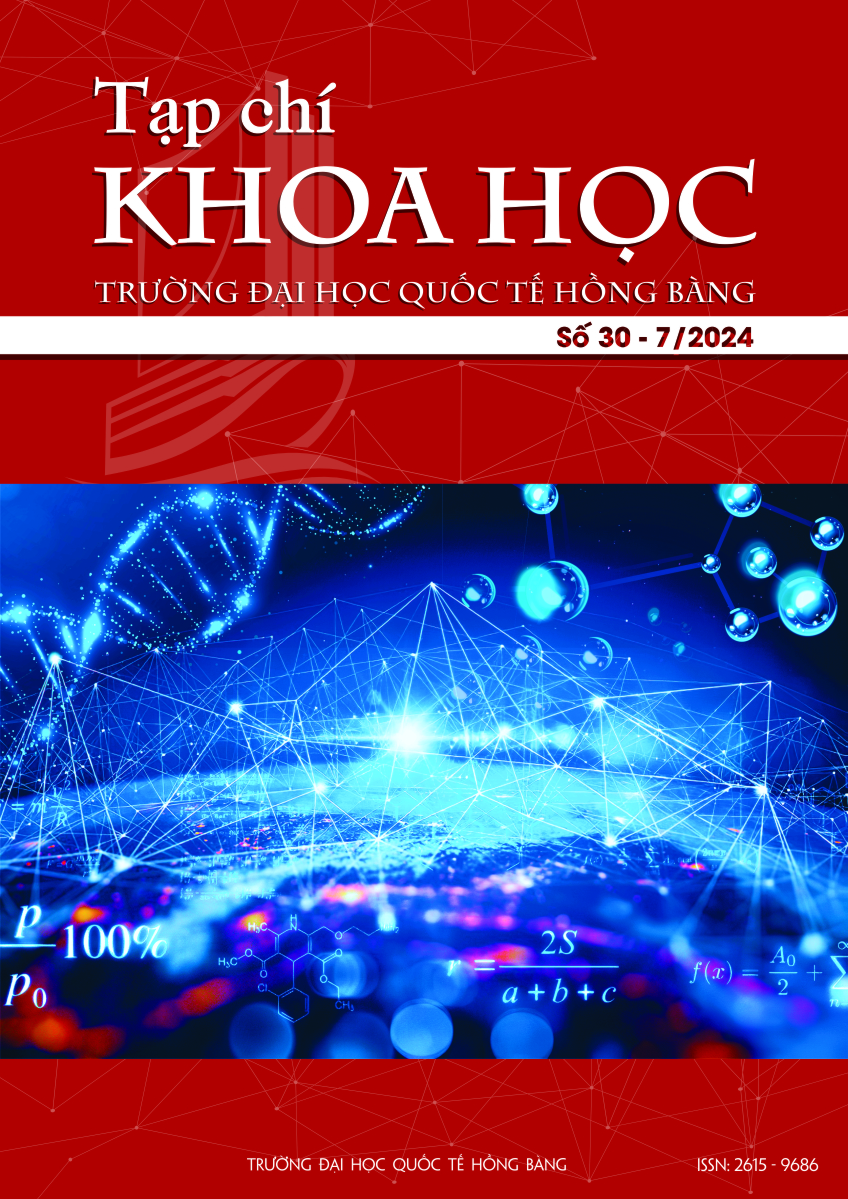Nghiên cứu công thức bào chế vi cầu tải Ibuprofen
Các tác giả
DOI: https://doi.org/10.59294/HIUJS.30.2024.639Từ khóa:
vi cầu, ibuprofen microsphere, bay hơi dung môi, polymerTóm tắt
Mở đầu: Ibuprofen được sử dụng đường uống để điều trị giảm đau, kháng viêm trong viêm đau cơ, khớp, thấp khớp. Ibuprofen hấp thu và chuyển hóa nhanh, thời gian bán hủy ngắn, tốc độ hòa tan hạn chế tốc độ hấp thu. Mục tiêu: Điều chế được vi cầu tải ibuprofen, làm sản phẩm trung gian điều chế các dạng thuốc làm thay đổi sự phóng thích. Phương pháp nghiên cứu: Vi cầu điều chế bằng phương pháp nhũ hóa dung môi bay hơi. Khảo sát các yếu tố của quá trình tạo cầu: nồng độ polymer, chất chống dính, loại chất nhũ hóa, tỷ lệ dược chất/polymer và tốc độ khuấy. Tính chất vi cầu thu được đánh giá bằng cảm quan, hình thể học, phân bố kích thước hạt, hiệu suất tải và khả năng giải phóng hoạt chất. Kết quả: Công thức điều chế với 0.6 g ibuprofen, 1.2 g ethyl cellulose, 0.1 g chất chống dính talc và chất nhũ hóa lecithin 1% cho hiệu suất tải đạt khoảng 9.56%. Vi cầu ibuprofen có hình cầu, trơn chảy tốt, kích thước khoảng 180 µm, phóng thích hoạt chất có kiểm soát, tăng dần theo vị trí hấp thu của thuốc trong đường tiêu hóa ở các môi trường pH 1.2, 4.5 và 6.8. Kết luận: Bước đầu đã xây dựng được công thức vi cầu tải ibuprofen, phù hợp và có thể ứng dụng trong thực tiễn sản xuất ở Việt Nam.
Abstract
Introduction: Ibuprofen is administered orally for analgesic, anti-inflammatory treatment in myalgia, joint inflammation and rheumatism. Ibuprofen is rapidly absorbed and metabolized, its half-life is short and its rate of dissolution limits the rate of absorption. Objectives: Modulation of ibuprofen-loading microspheres, which serve as intermediates in the preparation of drug that change release. Method: Ibuprofen microspheres were prepared using emulsification of evaporative solvents. Investigate the factors of forming process: polymer concentration, non-stick ratio, type of emulsifier, pharmaceutical/polymer ratio and stirring rate. Microsphere properties were analyzed regarding morphology, size analysis, drug payload and active substance release. Result: Formulated with 0.6 g of ibuprofen, 1.2 g of ethyl cellulose, 0.1 g of talc and 1% lecithin for load efficiency of approx. 9.56%. The ibuprofen microsphere is spherical, smooth, about 180 μm in size, controlled release of the active substance, gradually increasing to the absorption site of the drug in the gastrointestinal tract at pH 1.2, 4.5 and 6.8. Conclusion: Initially, the ibuprofen-loaded microspherical formula has been developed, which is suitable and can be applied in production practice in Vietnam.
Tài liệu tham khảo
[1] A. Khan, M. Bodhankar, & N. Pal, “Applications of Microparticles: A Review”, International Journal of Research in Pharmaceutical Sciences, Vol. 14(1), p. 51–56, 2023.
[2] Sahil K. et al., "Microsphere: A review", Int. J. Res. Pharm. Chem, Vol 1 (4), pp. 1184-1198, 2011.
[3] R.S. Kooij, R. Steendam, H.W. Frijlink, W. L J Hinrichs, “An overview of the production methods for core-shell microspheres for parenteral controlled drug delivery”, European Journal of Pharmaceutics and Biopharmaceutics, Vol. 170, p.24-42, 2022.
DOI: https://doi.org/10.1016/j.ejpb.2021.11.007[4] Q. Wei, H. Yuanzhi, G. Zhen, Z. Liu, …, Z. Jiwen, “Optimization of taste-masking on Ibuprofen microspheres with selected structure features”, Asian Journal Of Pharmaceutical Sciences, Vol. 14 (2), p. 174-182, 2019.
DOI: https://doi.org/10.1016/j.ajps.2018.05.003[5] Neeta M. M. et al., "Solvent evaporation technique: An innovative approach to increase gastric retention", International Journal of Advanced Scientific Research, Vol 1 (4), pp. 60-67, 2016
[6] Murtaza G., "Ethylcellulose microparticles: a review", Acta Pol Pharm, Vol 69 (1), pp. 11-22, 2012.
[7] Li M. et al., "Microencapsulation by solvent evaporation: State of the art for process engineering approaches", International journal of pharmaceutics, Vol 363 (1-2), pp. 26-39, 2008.
DOI: https://doi.org/10.1016/j.ijpharm.2008.07.018[8] N. Bolourtchian, K. Karimi, R. Aboofazeli, “Preparation and characterization of Ibuprofen microspheres”, Journal of microencapsulation, Vol. 22 (5), pp. 529-538, 2005.
DOI: https://doi.org/10.1080/02652040500161941Tải xuống
Tải xuống: 172











